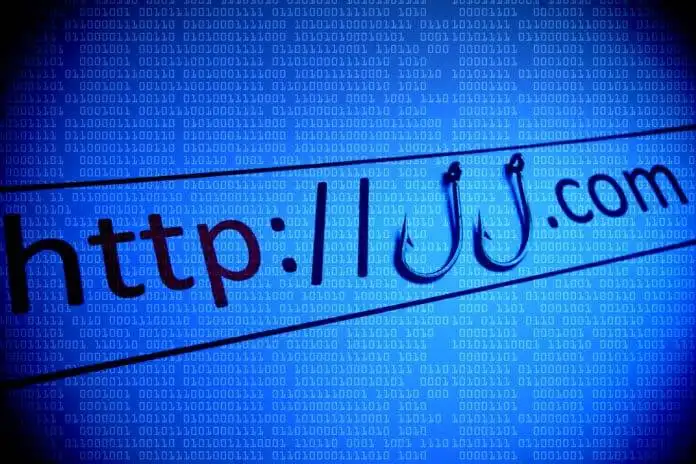In today’s digital world, the internet has become an integral part of our lives, offering convenience, connectivity, and endless possibilities. However, amidst the vast expanse of the online realm, there are those who seek to deceive and defraud unsuspecting users through the creation of fake websites.
These malicious platforms are designed to trick people into sharing personal information, making payments for nonexistent products or services, or even spreading malware. The prevalence of fake websites poses a significant challenge for internet users. That’s why it’s crucial to arm ourselves with the knowledge and skills to spot these deceptive sites and protect ourselves from falling victim to their schemes.
In this comprehensive guide, we will explore the telltale signs of fake websites and provide you with valuable insights to help you navigate the digital landscape with confidence. So, buckle up and get ready to delve into the world of fake websites. By the end of this guide, you’ll be equipped with the tools and understanding to distinguish between legitimate websites and clever impostors. Let’s dive in and unravel the secrets of spotting fake websites to safeguard your online experience.
Understanding Fake Websites
Fake websites are designed to mimic legitimate ones, often using similar branding, layout, and content. These malicious sites exploit users’ trust by imitating reputable companies, popular e-commerce platforms, or government agencies. Spotting these fakes requires a combination of critical thinking, attention to detail, and awareness of common tactics employed by scammers.
Signs of a Fake Website
Poor Website Design: Fake websites often have subpar design and visual quality. Grammatical errors, awkward layouts, and low-resolution images can be indicators of a fraudulent site.
Suspicious URLs: Pay close attention to the website’s URL. Fake websites may have slight variations in spelling or extra characters. Always double-check the domain name to ensure it matches the legitimate website.
Missing Contact Information: Legitimate websites typically provide clear contact information, including a physical address, phone number, and email address. If this information is absent or difficult to find, it raises suspicion.
Unsecured Connections: Look for the padlock symbol and “https” in the website’s URL. Secure websites encrypt data to protect users’ information. If a website lacks these security measures, it’s best to avoid providing any personal details.
Red Flags to Look Out For
Too Good to Be True Offers: If a website offers products or services at prices significantly lower than the market average, it’s a major red flag. Scammers use enticing discounts and promotions to lure victims.
Unsolicited Emails or Pop-ups: Be cautious of unsolicited emails or pop-ups advertising incredible deals or asking for personal information. Legitimate businesses rarely use such aggressive marketing tactics.
No User Reviews or Testimonials: Genuine websites often display user reviews or testimonials to establish trust. If a website lacks any form of social proof, it may be a sign of a fake.
Unreliable Payment Methods: Be wary of websites that only accept unconventional payment methods or ask for wire transfers. Reputable websites offer secure payment options, such as credit cards or trusted online payment gateways.
Verifying the Legitimacy of a Website
To confirm the authenticity of a website, follow these steps:
Research the Website: Conduct a search using the website’s name along with keywords like “scam” or “reviews.” Read user experiences and feedback from reputable sources to gather more information.
Check for Legal Information: Legitimate websites often provide clear terms of service, privacy policies, and refund policies. Verify that this information is present and aligns with industry standards.
Contact the Company: Reach out to the company using the provided contact information and ask questions about their products or services. Legitimate businesses are usually responsive and willing to address inquiries.
Tips for Identifying Scam Websites
Exercise Caution with New or Unknown Websites: If a website is relatively new or lacks an established reputation, proceed with caution. It’s safer to stick to well-known and trusted platforms.
Pay Attention to Website Trust Seals: Look for trust seals or badges from reputable organizations that verify the security and legitimacy of websites. Examples include Norton Secured, McAfee Secure, or the Better Business Bureau (BBB) accreditation.
Compare Prices and Information: Cross-reference prices, product descriptions, and details with other reputable websites. Significant discrepancies may indicate a fake website.
Tools and Resources for Spotting Fakes Online Scam Databases: Utilize online resources like scam databases or consumer protection websites that catalog known fake websites. These platforms can help you identify suspicious websites and stay updated on emerging scams.
Web Browser Extensions: Install browser extensions that warn users about potentially dangerous websites. These extensions often analyze website reputation, security certificates, and user feedback.
Protecting Yourself Online
While learning to spot fake websites is essential, it is equally important to take proactive measures to protect yourself while navigating the vast online landscape. By implementing the following practices, you can enhance your online security:
Stay Updated and Vigilant: Keep your software, including operating systems, web browsers, and antivirus programs, up to date with the latest security patches and updates. Regularly check for software updates to safeguard against known vulnerabilities.
Strong and Unique Passwords: Use strong, unique passwords for each online account you have. Avoid using easily guessable information and consider utilizing password managers to securely store and manage your passwords.
Exercise Caution with Personal Information: Be cautious when sharing personal information online. Only provide necessary details on trusted websites and avoid sharing sensitive information through unsecured channels.
Enable Two-Factor Authentication (2FA): Activate two-factor authentication whenever available. This additional layer of security adds an extra step to verify your identity and helps prevent unauthorized access to your accounts.
Educate Yourself: Stay informed about the latest online scams, phishing techniques, and security best practices. By educating yourself and staying vigilant, you can better protect yourself from evolving threats.
Conclusion
In the vast digital landscape, where fake websites abound, it is vital to sharpen your skills in spotting these fraudulent platforms. By understanding the signs of a fake website, verifying their legitimacy, and utilizing available tools and resources, you can navigate the online realm with confidence and protect yourself from falling victim to scams.
Remember to stay vigilant and pay attention to poor website design, suspicious URLs, missing contact information, and unsecured connections. Be cautious of offers that seem too good to be true, unsolicited emails or pop-ups, and the absence of user reviews or testimonials. Always verify the legitimacy of a website through research, checking for legal information, and contacting the company directly.
In addition to identifying fake websites, take proactive steps to safeguard your online presence. Use strong and unique passwords, keep your software updated, and exercise caution when sharing personal information. Enable two-factor authentication whenever possible to add an extra layer of security.
By following these guidelines and reporting fake websites to the appropriate authorities, you contribute to a safer online environment for yourself and others. Stay informed, be cautious, and enjoy the benefits of the internet while keeping potential risks at bay.
FREQUENTLY ASKED QUESTIONS
How can I report a fake website?
To report a fake website, you can contact local law enforcement, consumer protection agencies, or organizations like the Internet Crime Complaint Center (IC3). Submitting a complaint can aid in taking down fraudulent websites and preventing further scams.
Are all websites with low prices fake?
While not all websites with low prices are fake, significantly lower prices than the market average can be a red flag. Exercise caution and perform thorough research before making any purchases.
What should I do if I’ve already provided personal information to a fake website?
If you’ve unknowingly provided personal information to a fake website, act promptly. Change passwords for relevant accounts, monitor your bank and credit card statements, and consider contacting your financial institution to report the incident.
Can fake websites contain malware?
Yes, fake websites can distribute malware. It’s essential to have up-to-date antivirus software and avoid clicking on suspicious links or downloading files from untrusted sources.
How can I protect my online transactions from fake websites?
To protect your online transactions, use reputable and secure payment methods such as credit cards or trusted online payment gateways. Look for the padlock symbol and “https” in the website’s URL to ensure a secure connection.




